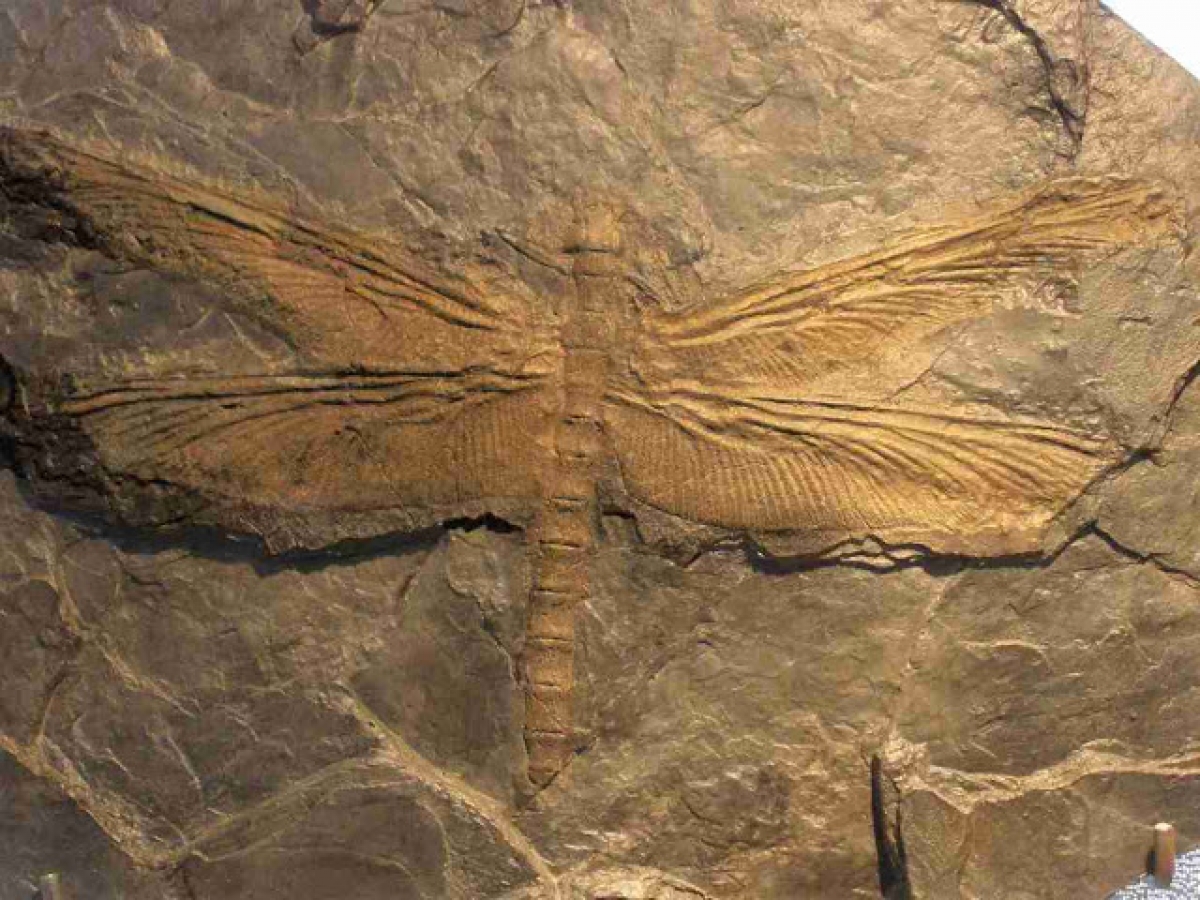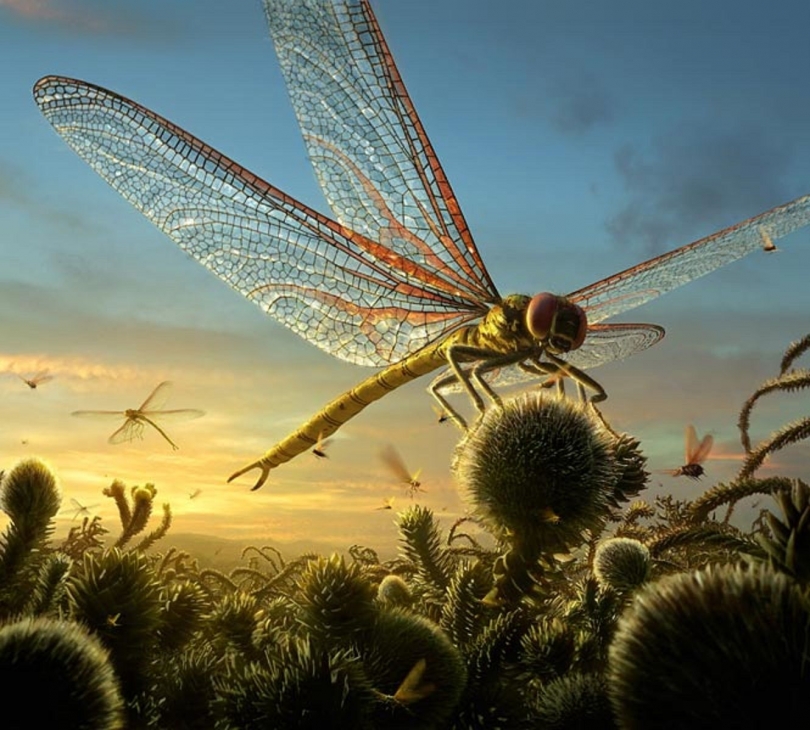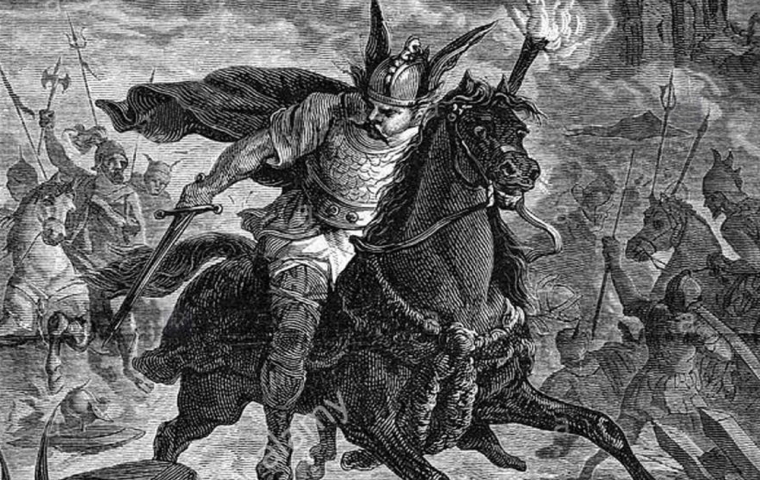The Largest Insect Ever Existed Was a Giant 'Dragonfly'
Weird History 'Meganeura' Was A Prehistoric Dragonfly With A Two-Foot Wingspan.

The largest known insect of all time was a predator resembling a dragonfly but was only distantly related to them. Its name is Meganeuropsis, and it ruled the skies before pterosaurs, birds and bats had even evolved.
Most popular textbooks make mention of “giant dragonflies” that lived during the days before the dinosaurs. This is only partly true, for real dragonflies had still not evolved back then. Rather than being true dragonflies, they were the more primitive ‘griffinflies’ or Meganisopterans. Their fossil record is quite short. They lasted from the Late Carboniferous to the Late Permian, roughly 317 to 247 million years ago.
The fossils of Meganeura were first discovered in France in the year 1880. Then, in 1885, the fossil was described and assigned its name by Charles Brongniart who was a French Paleontologist. Later in 1979, another fine fossil specimen was discovered at Bolsover in Derbyshire.
Meganisoptera is an extinct family of insects, all large and predatory and superficially like today’s odonatans, the dragonflies and damselflies. And the very largest of these was Meganeuropsis. It is known from two species, with the type species being the immense M.permiana. Meganeuropsis permiana, as its name suggests is from the Early Permian.

There has been some controversy as to how insects of the Carboniferous period were able to grow so large:
Oxygen levels and atmospheric density.
The way oxygen is diffused through the insect's body via its tracheal breathing system puts an upper limit on body size, which prehistoric insects seem to have well exceeded. It was originally proposed hat Meganeura was able to fly only because the atmosphere at that time contained more oxygen than the present 20%.
Lack of predators.
Other explanations for the large size of meganeurids compared to living relatives are warranted. Bechly suggested that the lack of aerial vertebrate predators allowed pterygote insects to evolve to maximum sizes during the Carboniferous and Permian periods, perhaps accelerated by an evolutionary "arms race" for increase in body size between plant-feeding Palaeodictyoptera and Meganisoptera as their predators.
Aquatic larvae stadium.
Another theory suggests that insects that developed in water before becoming terrestrial as adults grew bigger as a way to protect themselves against the high levels of oxygen.
Interesting Facts
- Though always associated with the modern-day dragonflies due to their appearance, considering the various structural and other characteristic differences between them, these insects were often classified as griffinflies.
- It was one of the largest known insects that ever lived, with a reconstructed wing length of 330 millimetres (13 in), an estimated wingspan of up to 710 millimetres (28 in), and a body length from head to tail of almost 430 millimetres (17 in)."
- The term 'Meganeura' means large-veined, and these insects had similar vein patterns in their wings. However, the vein patterns found in the wings of dragonflies usually vary.
- It is believed that their hunting and preying methods were quite similar to those of modern-day dragonflies. However, it may have attacked many more organisms owing to its larger size.
- Their large eyes made it possible for them to watch out for prey while the spine on their legs enabled them to get hold of it.
- Their wings had a network of veins. Moreover, they were heavily veined and had cross braces for strength unlike those of the present-day dragonflies that have delicate wings.
- The male insects would mate by taking hold of the female with the help of appendages in the front.
- They believe that it was impossible for the massive bodies of these insects to survive in the present-day atmospheric conditions and that this may have led to their extinction. (The oxygen content in today's atmosphere is up to 21% and back in the Carboniferous period, it was up to 35%.)
- The breathing mechanism of these insects allowed the passage of air through a system of tracheal tubes, transporting the oxygen directly to the internal tissues.
- Also, giant dragonflies were actually seen as gigantic creatures when compared to their living relatives, mainly due to the size of their wingspan rather than their bodies which were smaller than living species of some other groups.
10 Largest Castles in the World
The largest castles in the world in terms of area.
What if Attila Survived his Wedding Night?
What if Attila hadn't died in 453 AD? How his survival would have transformed the fate of the Roman Empire and all of Europe?
War & Violence? Humans Are Genetically Predisposed To Kill Each Other
Do humans kill each other because it’s in our blood, or is it all based on our environment?















